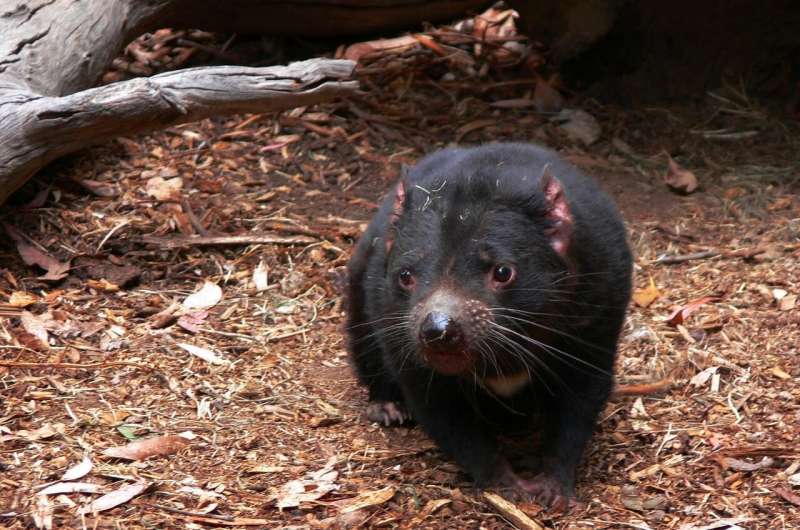April 17, 2024 report
This article has been reviewed according to Science X's editorial process and policies. Editors have highlighted the following attributes while ensuring the content's credibility:
fact-checked
peer-reviewed publication
trusted source
proofread
New study calls into question prior study results that found tumor transmission slowing in Tasmanian devils

A trio of biologists and veterinarians with CRG Barcelona, the University of Cambridge and The Barcelona Institute of Science and Technology, respectively, has found evidence contradicting results found by a prior team of researchers who claimed that they had found that tumor transmission in Tasmanian devils was slowing.
In their paper published in the journal Royal Society Open Science, Maximilian Stammnitz, Kevin Gori and Elizabeth Murchison, describe how they repeated the work done by the prior team and discovered errors had been made, leading to an incorrect assessment of the prognosis for the Tasmanian devil.
Tasmanian devils are carnivorous marsupials that live on the island of Tasmania. They are known for their ferocious looks, stocky build, pungent odor and extremely loud screeching. In recent years they have been listed as endangered due to a type of cancer that can be transmitted between animals. Devils become infected as cancer cells are transmitted during fights that involve bites to the face and neck. The tumors that develop make it difficult or impossible for the devils to feed themselves, and because of that they die of starvation. Scientists have named it devil facial tumor disease (DFTD).
In 2020, a team of researchers led by Austin Patton with the University of California, Berkely, found that the rate of transmission of DFTD had slowed due to it becoming endemic in the population of devils. That meant, they further claimed, that the disease had become stable, and because of that would not increase. In this new study, the research trio has found problems with the research done by Patton and his team and because of that, they claim the prior results are wrong.
In replicating the work of Patton and colleagues, the group involved in this new study conducted DNA sequencing of DFTD as a means of genotyping—doing so provides a means of estimating its spread. They found no evidence of DFTD becoming endemic. They suggest that the researchers on the previous study did not read enough of the sequences to gain an accurate picture of the spread of the disease and because of that came up with incorrect results.
The research trio insists that DFTD is still emergent, and because of that it represents a significant threat to the continued existence of the Tasmanian devil.
More information: Maximilian R. Stammnitz et al, No evidence that a transmissible cancer has shifted from emergence to endemism in Tasmanian devils, Royal Society Open Science (2024). DOI: 10.1098/rsos.231875
Journal information: Royal Society Open Science
© 2024 Science X Network



















